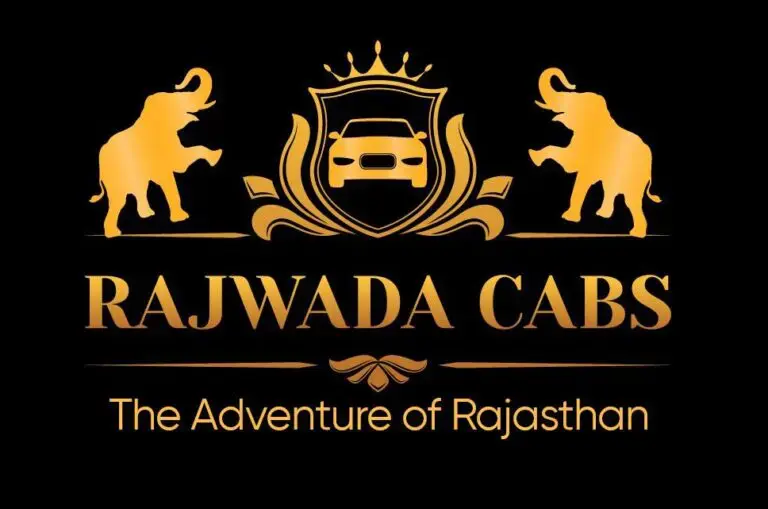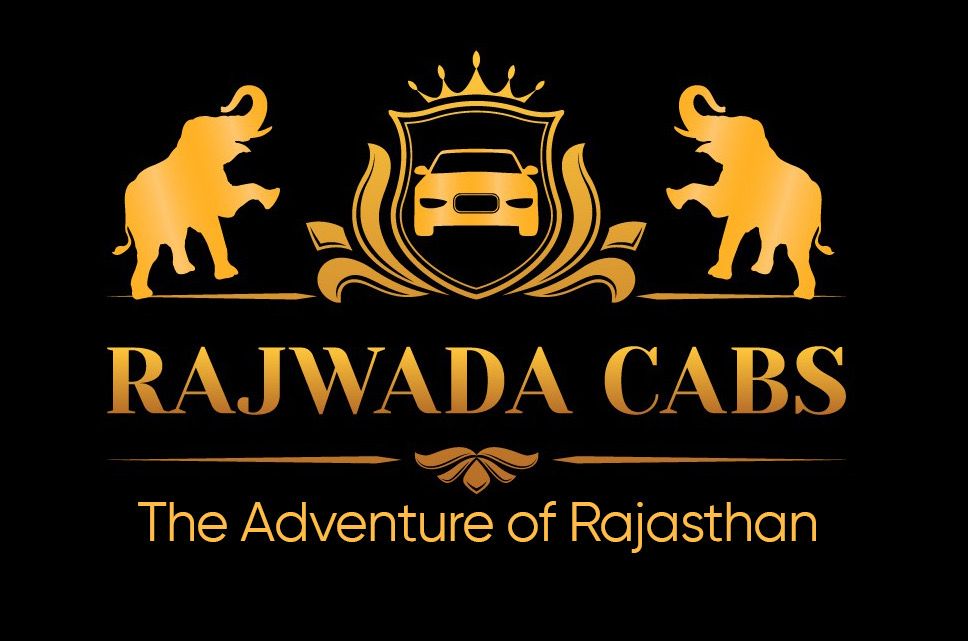
Are you traveling to Rajasthan and looking for the best travel guide for Jaipur Visit? Rajwada cabs have got your back covered. We are here with an amazing list of places to visit in Jaipur that will make your trip to Jaipur amazing and memorable.
Jaipur, also known as “The Pink City ” because of the blushing color of its historic buildings, is a princely wonderland of culture and heritage, brimming with architectural gems. It’s also a key stop on India’s well-known Golden Triangle, a popular tourist route.
Jaipur brings a splash of pink to the vibrant state of Rajasthan. This exotic destination, also known as the “Pink City of India,” is ideal for a luxury vacation. Jaipur, brimming with hospitality and opulence, is the ideal destination for tourists from all over the world. The eclectic mix of traditional and modern attractions will keep visitors of all ages entertained for days.
The welcoming and vibrant Pink city is an excellent location for learning about Rajasthani culture and heritage. As you walk through the city’s lanes, you can glimpse the opulent lives of Rajputana kings through the magnificent forts, palaces, and Havelis strewed about.
Aside from visiting the magnificent Amber Fort, Hawa Mahal, Jaigarh Fort, and Hawa Mahal, you can also indulge in delicious Rajasthani cuisine and shop at its lively bazaars. Embroidered leather shoes, embellished handicrafts, regal blue pottery, brilliant tie and dye scarves, camel hide products, and jazzy handmade apparel abound in the markets at Johari Bazar, Bapu Bazar, and MI Road. You can also experience the beauty of the Thar desert on an exciting camel safari or immerse yourself in the vibrant Rajasthani culture by attending local festivals such as Dhulandi, Teej, and Gangaur.
Prepare to be captivated by the grandeur of Jaipur, Rajasthan’s capital. City Palace gives you a taste of the opulent lifestyle enjoyed by Jaipur’s royal family. The astronomical instruments at the Jantar Mantar observatory, just next door, bring the mysteries of space to Earth. And, depending on when you visit, you might be able to attend one of the many festivals that fill Jaipur’s annual calendar, such as the International Kite Festival in January or the Elephant Festival in early February Spring Month.
Rajwada Cabs brings you the best travel guide to help you with places in Jodhpur. It also offers various cab, taxi, tempo, and Tour Guide services in Jaipur to ensure comfortable travel. Hire us and have a localite experience with Royalty.
List of Places to visit in Jaipur:
City Palaces
City Palace has stood at the heart of Jaipur’s Old City for nearly three centuries since Maharaja Sawai Jai Singh II decided to relocate his court from Amber. The fairy-tale-like structure, guarded by massive guard walls, is still the home of Jaipur’s modern-day royal family and is more extravagant and enchanting than you might imagine.
City Palace is a sprawling complex of buildings built around a series of landscaped garden courtyards overlooking Jaipur and Lake Palace, rather than a sand-colored regal abode. The entire property is a breathtaking example of Rajasthani and Mughal architecture.
The current residents live in the most visually appealing structure, the Chandra Mahal, an elegant structure with curved eaves and domed rooftops. Each of its seven stories is written in a completely different style. The ground floor is included in the admission price, but you must book a private tour to go upstairs.
The Mubarak Mahal (Welcome Palace) contains displays of dazzling costumes and textiles; the Armoury, a museum-like space dedicated to preserving finely crafted daggers and swords; Pritam Niwas Chowk (Peacock Courtyard), which has mesmerizing doorways painted to look like feathers of its namesake bird; and Diwan-i-Am (Hall of Public Audience), which displays the palace’s exquisite collection of miniature
After exploring the palace, visit the Friends of the Museum Bazaar, which has some of the best souvenirs in Jaipur (with equally high prices).
Tulsi Marg, Gangori Bazaar, J.D.A. Market, Pink City, Jaipur is the address.
Jantar Mantar
At first glance, Jantar Mantar may appear to be nothing more than a collection of massive abstract sculptures. But this isn’t an art gallery; it’s a special collection of astronomical tools begun nearly 300 years ago by Rajput ruler Jai Singh II to measure the heavens.
Each of the UNESCO World Heritage Site’s 20 or so structures serves a distinct purpose. The massive sundial, known as Samrat Yantra, at the observatory is particularly impressive. It stands 27 meters tall and casts a massive shadow that accurately measures time to the second.
The intricate Jai Prakash also uses the shadow of a metal plate suspended above a sunken bowl-like structure to track the passage of time.
Hawa Mahal:
If you had any preconceived notions about the appearance of buildings in Jaipur, they were most likely influenced by the Hawa Mahal (Palace of Breeze). It has all of the city’s distinctive architectural features, from the salmon-pink, honeycombed facade, designed to resemble the crown of the Hindu god Krishna, to the geometric accents and rows of tiny windows.
The landmark was built in 1799 to allow royal ladies to watch street festivals without being seen by the general public. Its 953 windows let in plenty of light, making it an ideal summer palace.
Tourists can learn about the sandstone structure’s history at the palace’s small museum–the ceremonial armor collection is especially interesting.
You can also wander through the palace’s narrow corridors. Don’t miss the colorful glasswork in windows and doorways, which casts an otherworldly glow on Hawal Mahal’s chambers.
Amber Fort:
Amber Fort, one of India’s most visited forts, is located in Jaipur. Built-in 1592, the sandstone and marble monolith stands atop a small hill about 20 minutes’ drive northeast of Jaipur’s center. It is best known as a pristine example of Rajasthani architecture.
Amber Fort is typically reached via a short uphill hike that is well worth the effort. It’s adorned with intricate inlaid marble patterns in nearly every color of the rainbow. The fort is divided into four sections, each with a beautiful garden courtyard outside. While you wouldn’t know it from the outside, you can explore the fort’s underground tunnels, some of which have been restored.
This UNESCO World Heritage Site has a fascinating history of legends, betrayals, and romance–but hiring a private guide at the Amber Fort is the best way for tourists to hear these stories.
Albert Hall Museum:
When English writer Rudyard Kipling visited the Albert Hall Museum in Jaipur, he declared it a “rebuke to all other museums in India from Calcutta downward.” That’s high praise coming from the son of a curator, and it’s appropriate for this prestigious institution.
The Albert Hall Museum, Rajasthan’s oldest museum, houses a large collection of art and historically significant artifacts. Come for the Egyptian mummy, but stay for the antique coins from various periods in India’s history, as well as charming permanent exhibits of miniature paintings, 18th-century costumes worn by members of various castes, and a strange collection of 19th-century clay figures demonstrating all the yoga poses.
Birla Mandir:
The stark white marble Birla Mandir stands out in a city that appears to be dipped in pink from head to toe. The Hindu temple honors Lakshmi, the goddess of wealth and purity, as well as Vishnu, one of the religion’s primary deities.
The magnificent structure exudes a quiet, peaceful vibe, providing just the right atmosphere to appreciate fine marble carvings, god shrines, and breathtaking sunset views. While you won’t need more than 30 minutes to get a sense of the space, the experience will be a welcome respite from a day of sightseeing.
Nahargarh Fort:
When it comes to sightseeing in Jaipur, the views don’t get any better than those at Nahargarh Fort. The nearly 300-year-old fort, also known as Tiger Fort, overlooks the entire city from atop the Aravalli Hills–a prime location for the structure to defend Jaipur against enemies many years ago.
This fort is more than just a formidable barrier; it also houses Madhavendra Bhawan, a summer retreat for royalty. The opulent Rajasthani structure houses a dozen identical boudoirs for the queens, which are linked to the king’s suite via mural-filled corridors.
Visitors can also visit the fort’s wax museum and sculpture park. If you get hungry, stop by one of the fort’s many restaurants for some traditional Indian fare.
Galta Ji:
In the desert state of Rajasthan, water sources can be scarce. So it’s no surprise that when people discovered a natural spring in an Aravalli Hills mountain pass, they honored it by erecting the Hindu temple Galta Ji. The temple, nestled between cliffs, has a few sacred water tanks, some with modest fountains, as well as frescoes that tell stories about the Hindu god Krishna.
While the official name for this location is Galta Ji, it is better known as the Monkey Temple because it is home to hundreds of macaques and langurs. Daring visitors may choose to buy a handful of peanuts at the gate to tempt the monkeys, but you’re better off simply watching the rambunctious creatures from afar.
Amarpali Museum:
When the founders of Amrapali Jewels, a well-known Indian jewelry brand, began collecting antique jewelry, they realized that some of these one-of-a-kind treasures deserved to be preserved and displayed.
The Jaipur Jewelry Museum has two full floors of gleaming jewels and objects from its 4,000-piece collection, showcasing the breadth of Indian craftsmanship.
The exhibits demonstrate how seriously Rajasthanis take their gold, silver, and precious gems. Among the jewels are silver bands for horses’ legs, a silver-covered chariot, embellished shoe covers, and a glorious crown for a Himachal Pradesh groom.
While these pieces are only for display, the Museum Shop sells a wide selection of necklaces, bracelets, and other wearables.
Museum of Legacies:
For much of history, Rajasthan’s most important handicrafts and works of art were housed in private collections that were inaccessible to the general public. That all changed when the Rajasthan government opened the Museum of Legacies. This tourist attraction, housed in a two-century-old mansion, displays an array of Indian embroidery, giant Rajasthani puppets, Pichwai paintings, and other items.
The magnificent marble latticework should not be overlooked. The swirling detail that the artisans were able to carve from such a strong, hard stone is hypnotic.
Jal Mahal:
When you first see the Jal Mahal, you might think you’re seeing a mirage. In comparison to the rest of the frantic city, the graceful palace appears to float atop the twinkling Man Sagar Lake.
The Water Palace appears to have only one story, but it actually has four levels submerged beneath a reservoir. Tourists are not permitted to visit the site; however, this may change in the future. According to rumors, entrepreneurs want to turn the dilapidated space into a high-end restaurant.
For the time being, simply admire the palace from afar. It is illuminated in all its glory at night, casting a golden, glowing reflection on the water.
Markets to Visit:
Jaipur is a shopping paradise for souvenirs. The Pink City’s markets are brimming with everything from costume jewelry and precious gemstones to embroidered textiles, cobalt blue pottery, and Rajasthani puppets.
Head to the Handicrafts Emporium across from Ajmeri Gate for a hassle-free shopping experience. The government-run shop sells high-quality traditional handicrafts such as blue pottery with yellow flowers, sets of wooden carvings of Rajasthani characters, and hand-printed saris. Because the prices on these items are fixed, you won’t be able to negotiate a discount, but you will avoid the hassle of bargaining.
Johari Bazar is a jewelry connoisseur’s dream. The market sparkles from head to toe, with dozens of stores selling everything from costume jewelry to fine silver and gold.
Finally, don’t leave Jaipur without stopping by Bapu Bazar. The tourist-favorite market is just a few blocks southwest of Johari Bazaar and is packed with handcrafted trinkets, locally made textiles, bedazzled slippers, and souvenirs galore.
Jaigarh Fort:
The Jaigarh Fort, perched on a hilltop overlooking the Amber Fort, is a spectacular place to visit in Jaipur. Great views, however, are only the beginning of this fort’s claim to fame. It is best known for housing the Jaivana Cannon, which when built in the early 18th century was thought to be the world’s largest cannon on wheels.
Tourists who visit the attraction gain an appreciation for the fort’s role in keeping Jaipur and the surrounding area safe from intruders. The fort is three kilometers long and has thick sandstone walls and a series of subterranean passages. It is thought to be the most powerful of Jaipur’s forts. When it was in use, the fort was not only fortified but also opulent.
Panna Meena Ka Kund:
Another place to visit after you visit Amber Palace, Panna Meena ka Kund, a stepwell dating from the 16th century is a 10-minute walk from Amber Palace. Locals used to come here to fill their water pots for rituals and household chores. It was also a popular spot to cool off in the scorching desert heat.
For good reason, the attraction’s primary purpose today is as a backdrop for tourist photos. Its golden yellow hue and labyrinthine steps, which appear to have been plucked from one of M.C. Escher’s artworks, make for postcard-worthy photographs. However, as tempting as it may be to enter the beautiful attraction for a selfie, Panna Meena ka Kund does not allow visitors to go inside, so limit your photo shoot to the outside.
Akshardham Temple:
The Akshardham Temple may appear to be an ancient site, but it was built in the twenty-first century as part of a series of ten temples dedicated to the Hindu god Narayana (a form of Lord Vishnu).
Nonetheless, the 23-acre religious complex is a beautiful place to spend an afternoon. With its stone carvings of Hindu deities, animals, and scenery, the white marble, and pink sandstone temple exemplifies the intricacy of Hindu architecture. Inside, you’ll find massive pure-gold statues and pristine paintings. Just outside is a tranquil garden courtyard brimming with lush plants and a musical fountain.
Ready to explore the beautiful Pink City: Jaipur with Rajwada Cabs!
Finally, we’ve visited almost all of Jaipur’s prominent tourist attractions. This is one of the nicest spots in Rajasthan, and I don’t think any Rajasthani has missed it. And, if you ask me, I believe Jaipur is famous for a variety of reasons. Forts and castles, lakes and ponds, gardens and hotels, lively marketplaces, and handicrafts are only a few examples.
The Marwar area of Rajasthan is brimming with bravery and fortitude stories. You may make the most of your time in Jaipur by going on exciting excursions to historic and religious sites. Excursions from Jaipur provide a plentiful opportunity to experience the rich Rajasthani culture. Amber Fort, Udaipur, Mount Abu, Jodhpur, Ajmer, and a number of other cities are among them.
Get an unforgettable travel experience in Jaipur… Rajwada Cab provides Cab and Taxi in Jaipur for you to make memories in the city.







